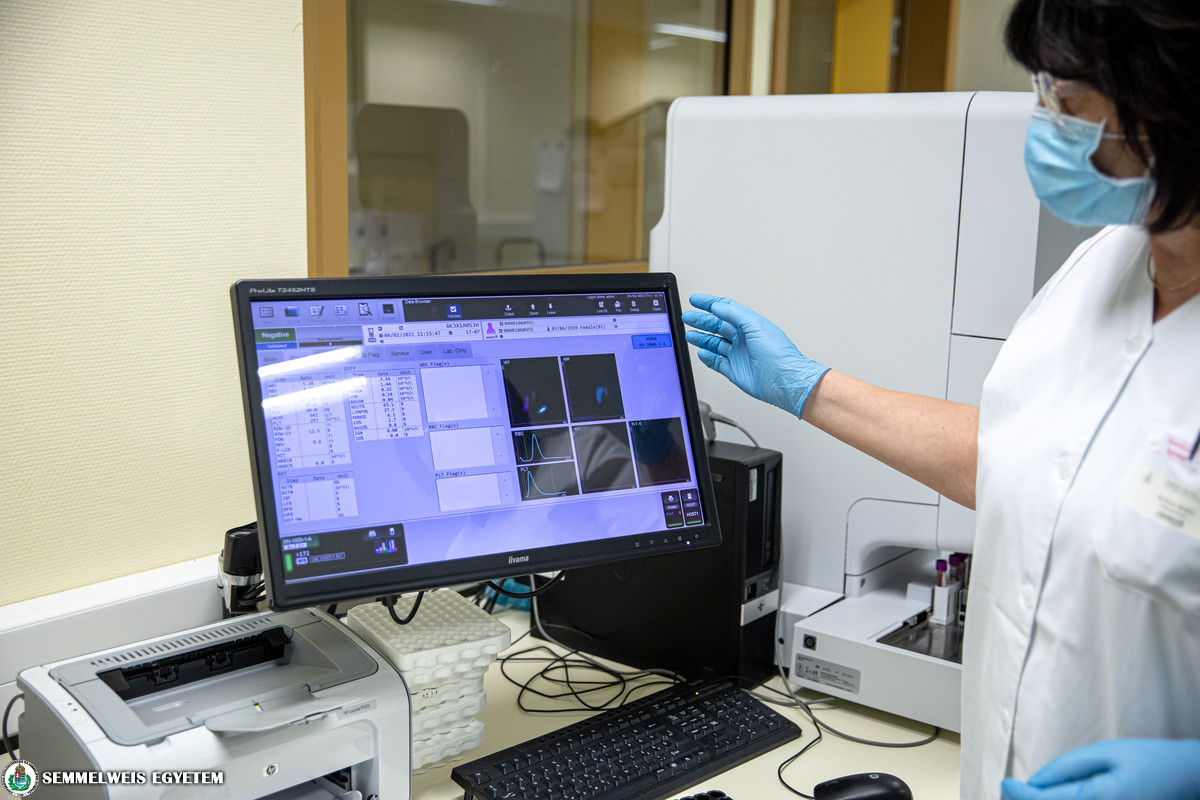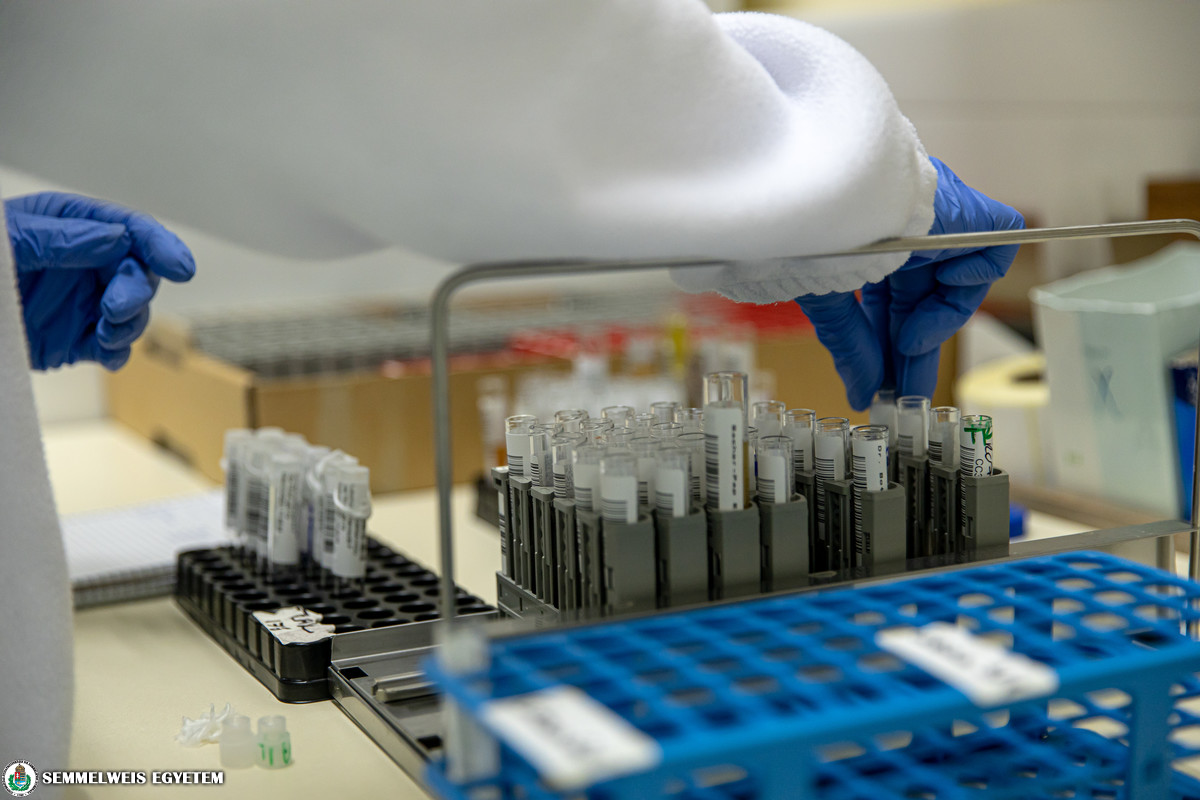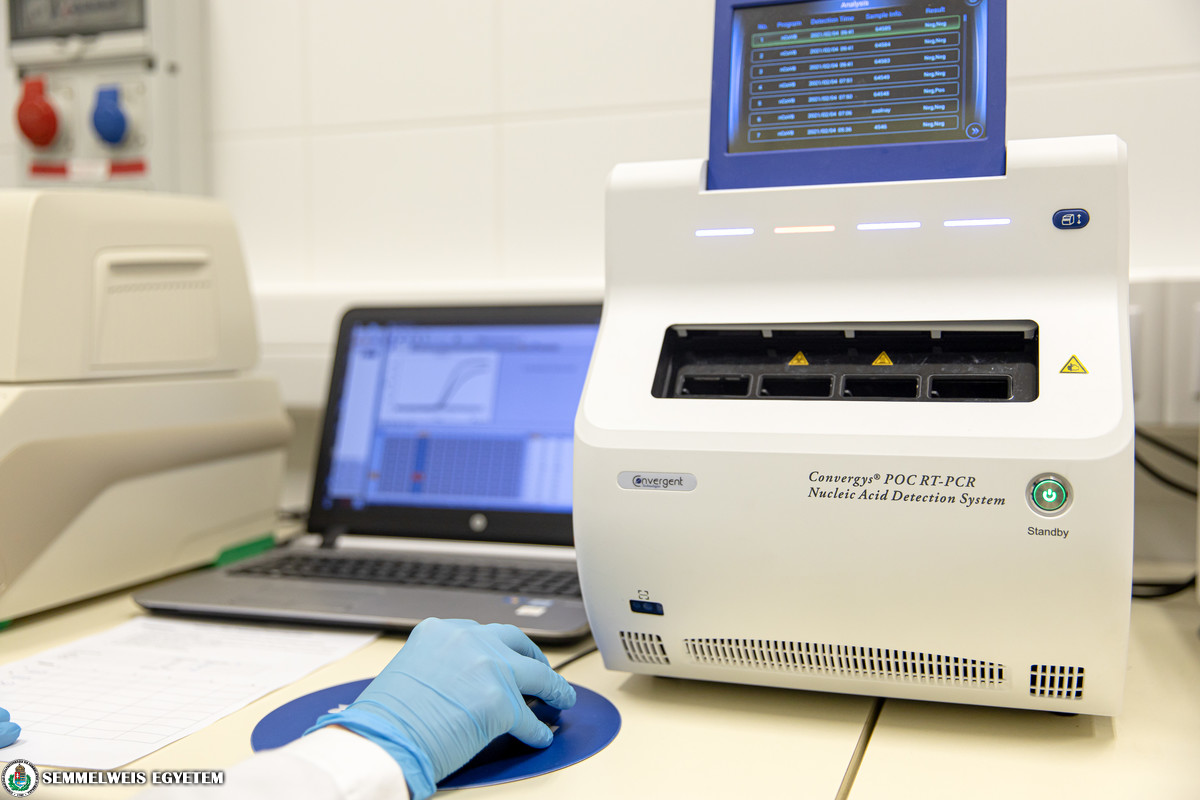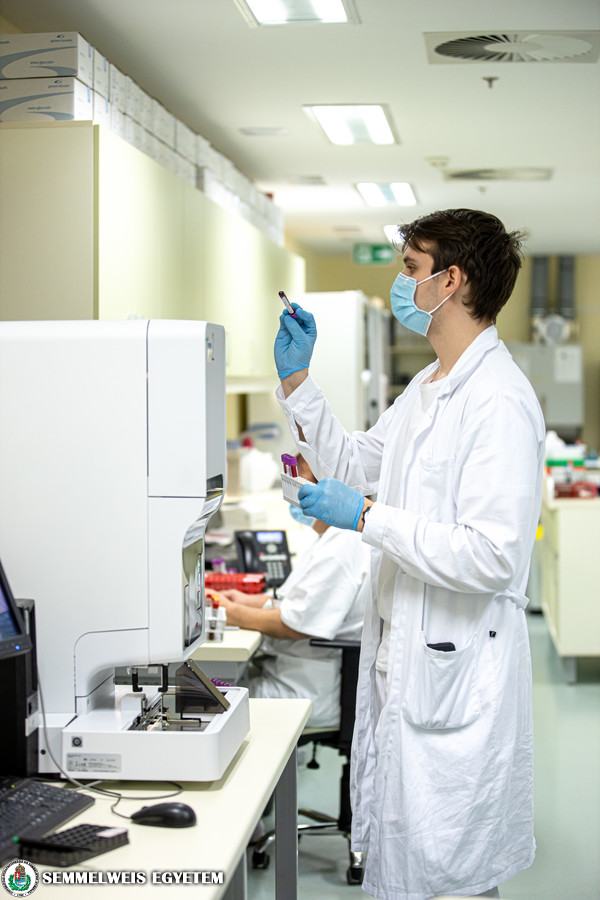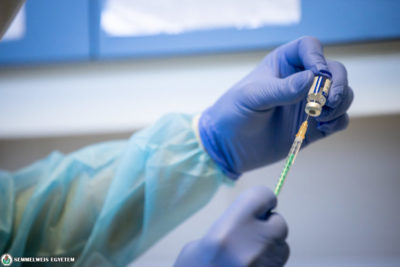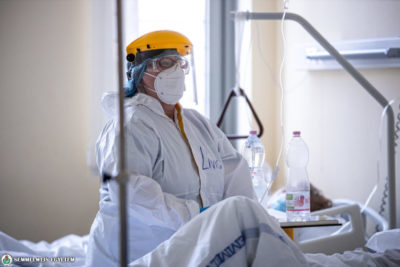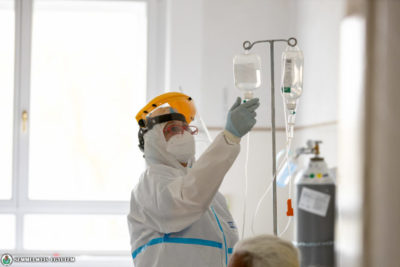The Department of Laboratory Medicine at Semmelweis University was one of the first in the country to have the necessary equipment required to diagnose coronavirus. In the next part of our series of articles presenting the organizational units involved in COVID care, Dr. Barna Vásárhelyi, Head of the Department of Laboratory Medicine talks about his experiences.
How long have you been involved in COVID patient care? Do you remember the first case?
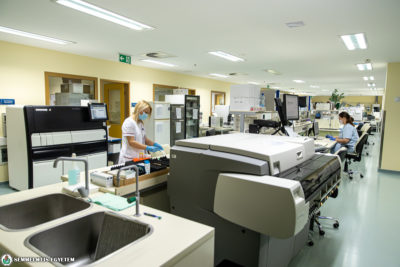 At the Department of Laboratory Medicine, we were among the first in the country to acquire the necessary equipment required to detect the virus. Initially, we applied for and received permission to perform the tests for research purposes, and then in mid-March 2020, the National Public Health Centre officially designated our institute as a diagnostic center for virus detection. I do not remember exactly when we diagnosed the first positive case, but I remember the feeling that it reassured us that our system was working.
At the Department of Laboratory Medicine, we were among the first in the country to acquire the necessary equipment required to detect the virus. Initially, we applied for and received permission to perform the tests for research purposes, and then in mid-March 2020, the National Public Health Centre officially designated our institute as a diagnostic center for virus detection. I do not remember exactly when we diagnosed the first positive case, but I remember the feeling that it reassured us that our system was working.
What is the role of your unit within the university in COVID-19 patient care?
The role of the laboratory has greatly increased during the epidemic, since it is a key element of disease control to identify who is contagious and who has already recovered from the infection. Diagnostics in this regard is our main task. In addition, of course, we also support COVID patient care by providing other routine examinations.
As far as the department is concerned, how do you see the difference between the first and the current, second wave?
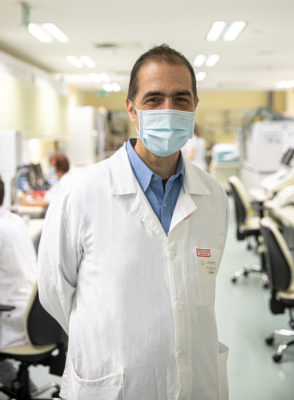 Before the epidemic, our laboratory performed only 5-10 tests per day based on PCR technology (although less frequently, the method is also used to detect other viruses). With a slight exaggeration, we were about to give up PCR tests. Then, at the beginning of the first wave, the test number increased and reached 3-400 per day, then it reached 1000, and by the beginning of September, it reached 3000 samples per day. COVID diagnostics is still not a standard task today, as new types of tests are always introduced and clinical needs are changing. When PCR tests were not available in sufficient numbers during the first wave, the focus was on rapid antibody testing, antibody detection from blood, and later followed on tests detecting viral protein that can also be performed by patient beds. Now, the new task of the laboratory is likely to be measuring the development of protection. In diagnostics, however, PCR tests are still unavoidable. Important technological development has also taken place in this field, and in the autumn, Semmelweis University also participated in the testing and introduction of a new, single-step PCR test that simplified the workflow.
Before the epidemic, our laboratory performed only 5-10 tests per day based on PCR technology (although less frequently, the method is also used to detect other viruses). With a slight exaggeration, we were about to give up PCR tests. Then, at the beginning of the first wave, the test number increased and reached 3-400 per day, then it reached 1000, and by the beginning of September, it reached 3000 samples per day. COVID diagnostics is still not a standard task today, as new types of tests are always introduced and clinical needs are changing. When PCR tests were not available in sufficient numbers during the first wave, the focus was on rapid antibody testing, antibody detection from blood, and later followed on tests detecting viral protein that can also be performed by patient beds. Now, the new task of the laboratory is likely to be measuring the development of protection. In diagnostics, however, PCR tests are still unavoidable. Important technological development has also taken place in this field, and in the autumn, Semmelweis University also participated in the testing and introduction of a new, single-step PCR test that simplified the workflow.
How did you have to reorganize work?
Due to the significantly increased tasks, the work schedule of the laboratory had to be fundamentally reorganized. Our base capacity is 3-400 PCR tests per day, compared to a period when we had to perform ten times of this amount. The help of medical students, who were involved in sample preparation, administration, and occasionally in performing the tests, meant a lot to us. There was a period when 6-7 medical students helped us at the same time and there were a total of 80 medical students helping us every month. Staff from other departments of the university also helped, so we received and continue to receive constant support from the Institute of Medical Microbiology and the Research Laboratory of the Department of Internal Medicine and Hematology. Huge thanks go to my co-workers who fight on the front line and take an enormous workload. I consider it my mission to create an appropriate background for them and for their work.
What are the most important lessons and experiences that will be useful in the future?
As a result of the epidemic, medical students have been able to learn more about the work of laboratories, and I believe that this will encourage more people to choose this profession as a resident. I think it is important that, due to the epidemic, we have been able to develop a diagnostic background and procedures that will enable us to solve any possible challenges in the future even faster and more flexibly. Another positive benefit is that the extreme situation also inspires technology companies to reach incredible results: research and clinical application are brought together rapidly.
Pálma Dobozi
Photo: Attila Kovács – Semmelweis University
Translation: Katalin Illés-Romhányi
